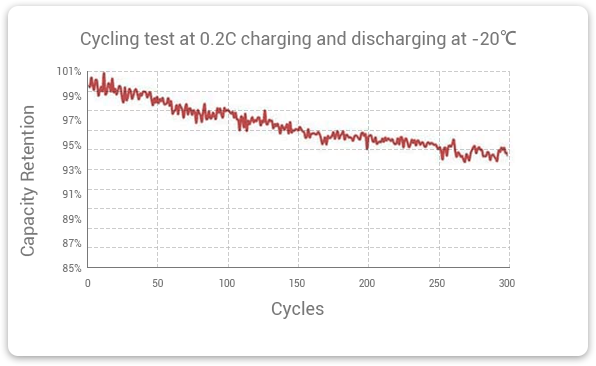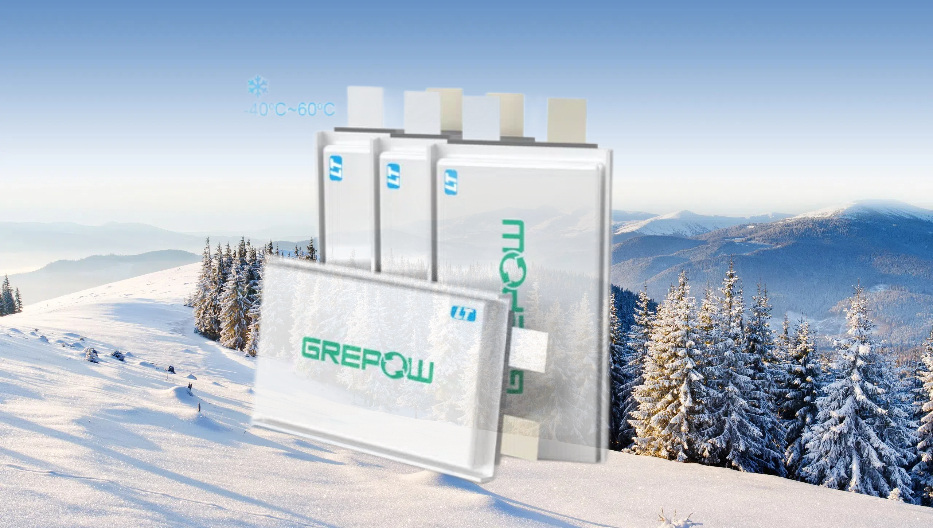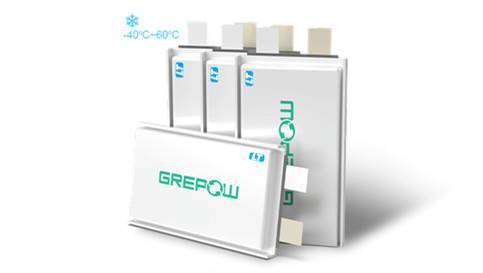How low temperature affects the battery
You may have heard that batteries don't last as long in colder temperatures, or you may have experienced yourself how your battery runs out of life faster in low temperatures. To provide a better understanding, we will explore in this article the various factors that affect batteries at low temperatures.
The influence factors
Chemical reaction rate
At low temperatures, the intercalation of lithium ions on the graphite electrode and the lithium plating reaction proceed simultaneously. Under cool environments, the lithium ions in graphite diffuse inhibited, and the conductivity of the electrolyte decreases; as a result, the intercalation rate also decreases. This allows lithium plating to occur more easily on the graphite surface, and this accumulation leads to an increase in the thickness of the solid electrolyte interface (SEI).
Discharge capacity
The activity of the positive electrode material (graphite electrode) decreases in low temperatures, so the number of lithium ions that can move and bring about the discharge current decreases, thereby reducing the battery capacity.
Battery resistance
At low temperatures, the diffusion and movement of the charged ions of the positive and negative electrodes worsen. The transfer speed in the electrolyte reduces as well, and deposits also form on the surface of the active material, which leads to an increase in battery resistance. On top of that, this process produces extra heat. Ultimately, the performance of lithium batteries is severely degraded at low temperatures. At the same time, lithium ions undergo other reactions during battery charging and discharging. This is mainly an irreversible reaction between lithium ions and electrolytes. Long-term exposure to this environment will cause the capacity of lithium batteries to decline and can even cause permanent damage to the battery. Does this mean that we can never go out in winter with electrical appliances? Of course not. Fortunately, there are more batteries that are being developed so that they can withstand the defects inherent in the performance of batteries in cold environments.
Some features of low-temperature batteries
LiPo Batteries
Their working temperature range is -50℃ to 50℃. Compared with traditional lithium polymer batteries, they have broken through the discharge temperature limit of -20℃ to 60℃ Low-temperature LiPos discharge at over 60% efficiency at 0.2C at -40℃. At -30℃, the efficiency is over 80%. When charged at 20℃ to 30℃ by 0.2C, the battery capacity can maintain above 85% after 300 cycles. The picture below shows the charging rate at different temperatures:

Discharge efficiency of low-temperature LiPo batteries at different temperatures
Low-temperature LiPos are safe, reliable and in accordance with IEC, UL, PSE, UN38.3 lithium-battery safety standards.
LiFePO4 Batteries
Their working temperature range is -40℃ to 55℃. Special electrolytes can be used in the stacking process to allow for better low-temperature performance and less resistance than the traditional rolling process. Low-temperature LiFe batteries are environmentally friendly and non-toxic while also having a high working voltage and performance. With a lithium-iron-phosphate system, they are safe and have a long cycle life. They discharge over 85% efficiency at 0.2C and -20℃. At 30℃, their efficiency is over 70%. At -40℃, it is around 55%.
The picture below shows the charging rate at different temperatures:

Low-temperature liFePO4 battery’s discharge efficiency at different temperatures
Low-temperature LiFePO4 batteries have a 93% capacity retention even after 300 cycles at 0.2C and -20℃ as show below:

Grepow's low temperature LiFe batteries test data about 300 cycles of charge and discharge (Source: Grepow)
The above data comes from Grepow, one of the largest battery manufacturers in the world. All batteries can be customized for capacity, size, and shape. Grepow provides high-performance, low-temperature batteries for special equipment, deep-diving equipment, public safety, medical electronics, aerospace industry, scientific research in polar regions, and various other consumer products. For more data about low-temperature batteries, go here.
Related Articles
-

How to Choose Lithium Batteries for Cold Weather?
2024-09-19 -

What is the impact of long coldness on Agriculture Spraying UAVs Batteries and how to deal with it?
2022-12-12 -

Low Temperature Lithium Batteries Recharge at Minus 20℃
2022-12-01
















































